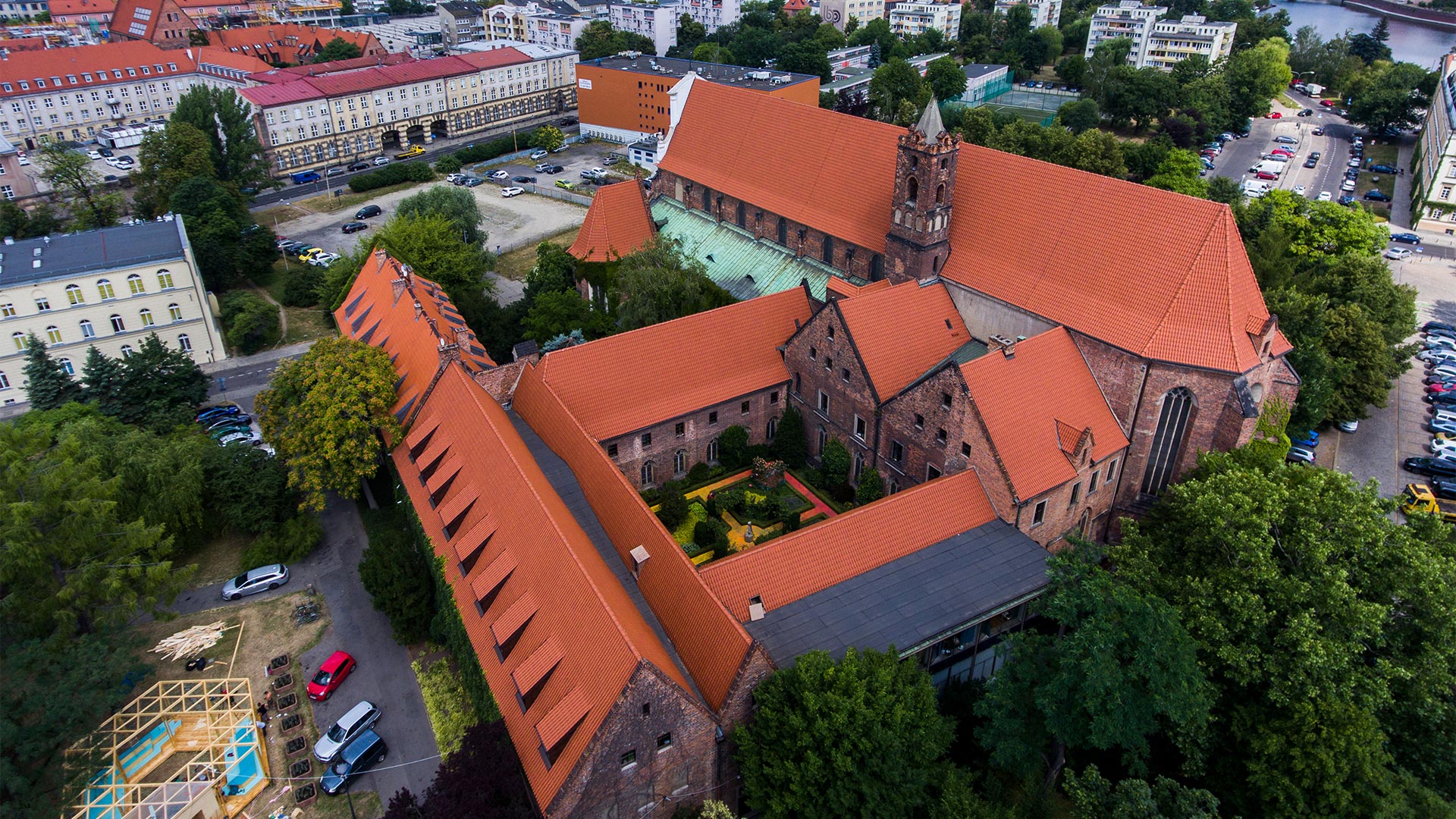弗次瓦夫建築博物館(Museum of Architecture in Wrocław)誕生於1965年,是歐洲最早的建築博物館之一。到目前為止,它仍是波蘭唯一一所致力於展示歷史與當代建築的博物館。博物館的發起者與創辦人為弗次瓦夫當時的市定古蹟保存官員、後來擔任弗次瓦夫科技大學教授的奧爾吉德.策爾納(Olgierd Czerner),他從創館開始即一路帶領博物館直至2000年。在他的奔走之下,新成立的博物館並非如預期般設在國家首都,而是選址於所謂的「收復領土」區,這個地區是在1945年的雅爾達會議後才被併入波蘭。
當時決定,博物館的館址將設於前伯爾納定修道院(Bernardine monastery)內,這座修道院的歷史可上溯十五世紀後半至十六世紀初期。此一獨特的歷史建築群是由一座哥德式教堂,以及環繞著一座露天庭院的迴廊所組成,在二次世界大戰末期這裡曾受到重創,戰爭結束近二十年後仍為一片廢墟。修道院的重建工程是依照建築師艾德蒙.馬瓦赫維奇(Edmund Małachowicz)的設計進行,以饒富興味的方式結合了歷史建物的重建與現代主義建築的元素,自1960年代初期開始動工。隨著前栖亞那的聖伯爾納定(St. Bernardine of Siena)教堂於1974年底開幕,整修工程也告一段落,原教堂被改造為博物館的主要展覽空間。
The Museum of Architecture in Wrocław came into being in 1965, as one of the first institutions of this kind in Europe. Until today it is the only museum institution in Poland dedicated as a whole to the historical and contemporary architecture. The originator of the idea and founder of the museum was the then chief conservator of city monuments and later the professor of Wrocław University of Science and Technology— Olgierd Czerner, who led the institution from its founding until the year 2000. Thanks to his efforts, the new museum was established not – as one might expect – in the capital of the country, but in the area of the so-called Reclaimed Territories, annexed to Poland in 1945 as a result of the Yalta Conference.
It was decided that the museum would be located in the former Bernardine monastery, dating back to the second half of the 15th and early 16th century. The unique complex of historical buildings, consisting of a Gothic church and cloisters surrounding an open inner courtyard, was severely damaged at the end of World War II and remained in ruins for almost two decades. Its rebuilding in accordance with the design of architect Edmund Małachowicz, which in an interesting way combined the historical reconstruction with elements of modernist architecture, began at the early 1960s. It came to an end in 1974 with the opening of the former St. Bernardine of Siena Church, adapted for the main exhibition space of the museum.
